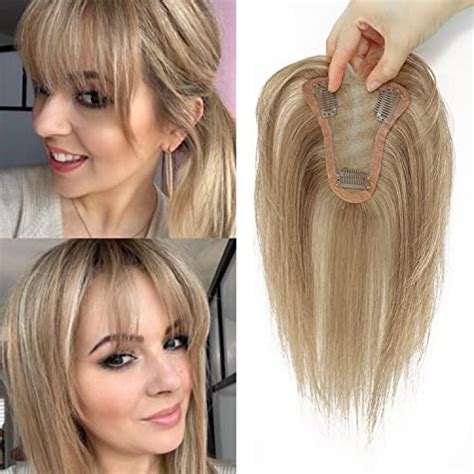Hair Toppers for Thin Hair: 12 Essential Tips to Transform Your Look

Thin hair can be a common pain point for many individuals, affecting their self-esteem and overall appearance. According to the American Academy of Dermatology, approximately 40% of women experience hair loss, with thinning hair being a significant contributing factor.
To address this concern, hair toppers have emerged as a popular solution for enhancing volume and concealing thinning areas. These non-surgical alternatives offer numerous benefits, including:
Key Benefits of Hair Toppers for Thin Hair:
- Instant Volume Boost: Hair toppers add instant volume and fullness, creating the illusion of thicker, healthier hair.
- Concealment of Sparse Areas: They effectively cover thinning areas, blending seamlessly with natural hair to minimize visibility.
- Versatile Styling Options: Hair toppers come in various colors, textures, and lengths, allowing for customization to match your hair and desired style.
- Non-Invasive: Unlike surgical hair restoration procedures, hair toppers are non-invasive, providing a temporary solution without any pain or downtime.
- Affordable Alternative: Compared to hair transplants or extensions, hair toppers present a more cost-effective option for addressing thinning hair.
Types of Hair Toppers for Thin Hair:
- Synthetic Hair Toppers: Made from artificial fibers, these toppers are durable and affordable, offering a wide range of styles.
- Human Hair Toppers: Constructed from natural human hair, these toppers provide a more realistic appearance and can be styled and colored as desired.
- Clip-In Hair Toppers: Featuring convenient clips for attachment, these toppers are easy to apply and remove, allowing for quick and flexible use.
- Permanent Hair Toppers: These toppers are semi-permanently attached using adhesive, providing a secure and long-lasting solution.
How to Choose the Right Hair Topper:
- Determine Thinning Area: Identify the specific area where hair thinning is most noticeable to determine the size and shape of the hair topper needed.
- Consider Hair Color and Texture: Match the color and texture of the topper to your natural hair as closely as possible for a seamless blend.
- Experiment with Styles: Try out different styles and lengths to find the one that complements your face shape and personal preferences.
- Consult a Professional: If possible, visit a hair stylist or salon specializing in hair toppers for expert guidance and recommendations.
Step-by-Step Guide to Applying a Hair Topper:
- Unpack and Brush: Remove the hair topper from its packaging and gently brush it to remove any tangles or shedding.
- Section Your Hair: Part your natural hair where the thinning area is located and create a base for the topper.
- Secure the Base: Clip or pin the base of the hair topper to secure it to your hair.
- Adjust the Volume: If desired, add additional hair to the topper by attaching multiple toppers or using hair clips for volume.
- Style and Blend: Style the hair topper and blend it with your natural hair using a brush or comb.
Pros and Cons of Hair Toppers for Thin Hair:
Pros:
- Instant volume boost
- Conceals thinning areas
- Non-invasive and affordable
- Versatile styling options
Cons:
- May require regular maintenance
- Can be uncomfortable or irritate the scalp with prolonged use
- May not be suitable for all hair types or textures
Conclusion:
Hair toppers offer a convenient and effective solution for individuals seeking to enhance volume and conceal thinning hair. By following the tips outlined in this guide, you can choose and apply a hair topper that seamlessly integrates with your natural hair, boosting your confidence and transforming your overall look. However, it’s important to approach hair toppers with realistic expectations and understand their potential limitations to make an informed decision that meets your specific needs.
